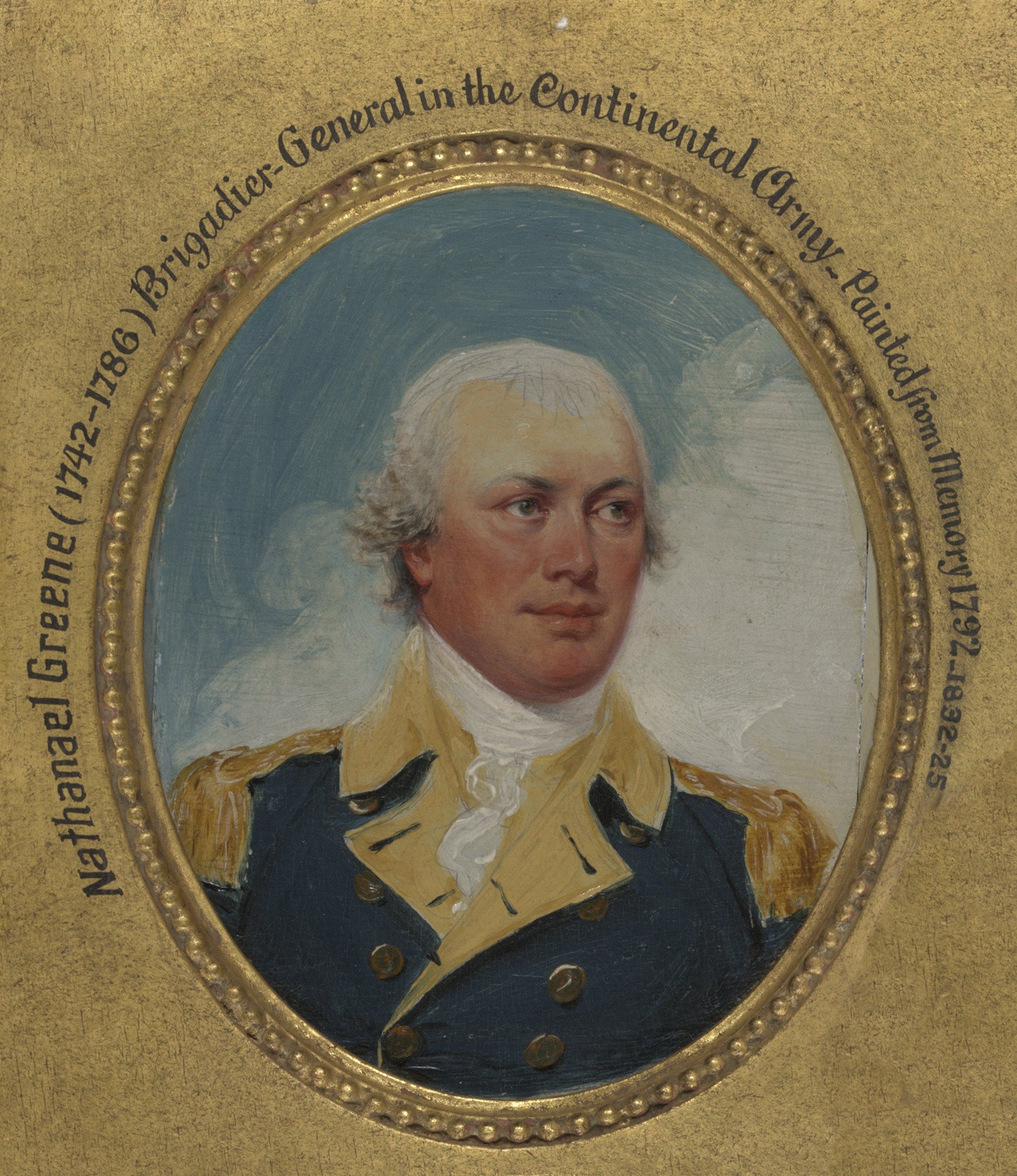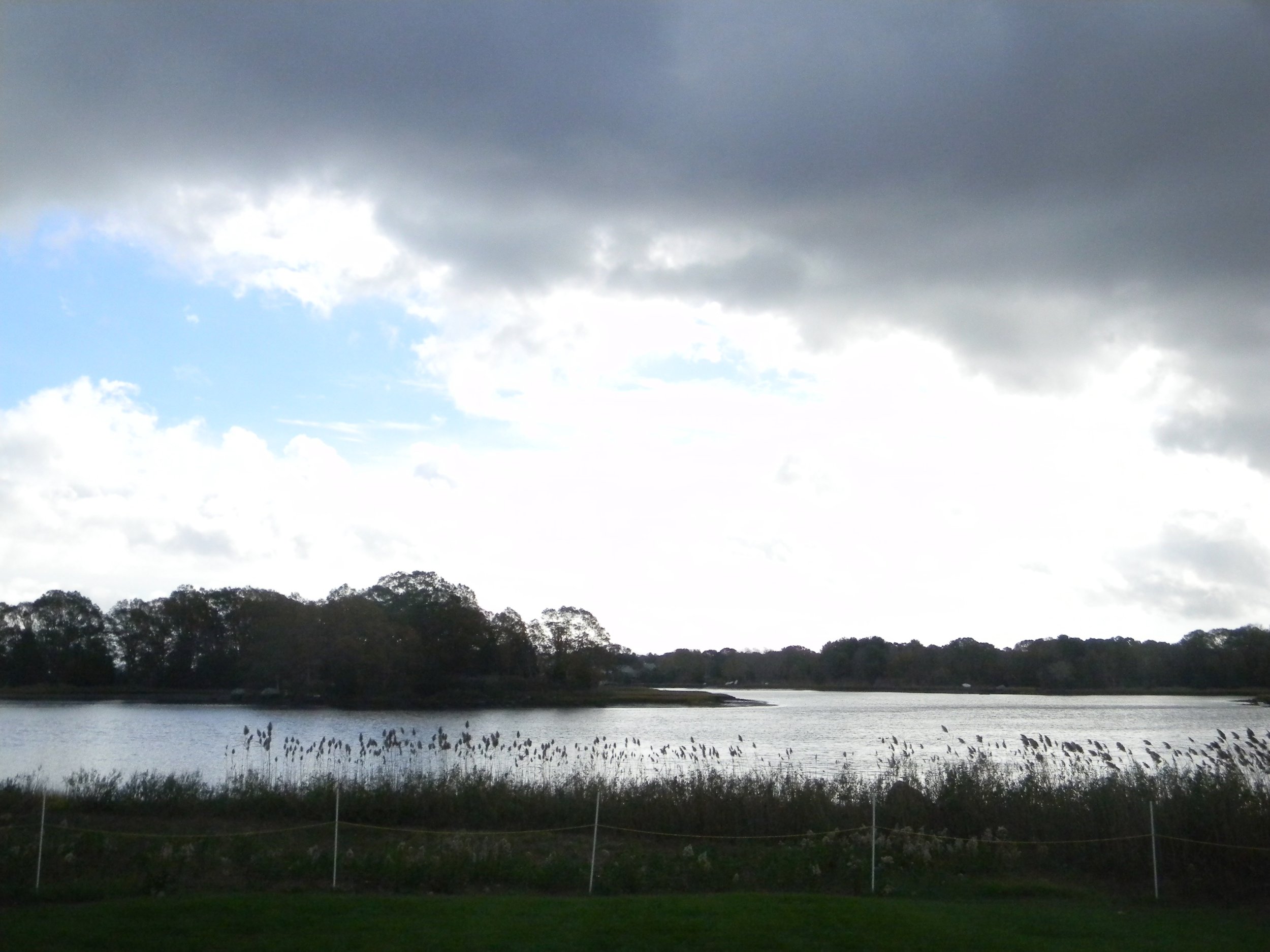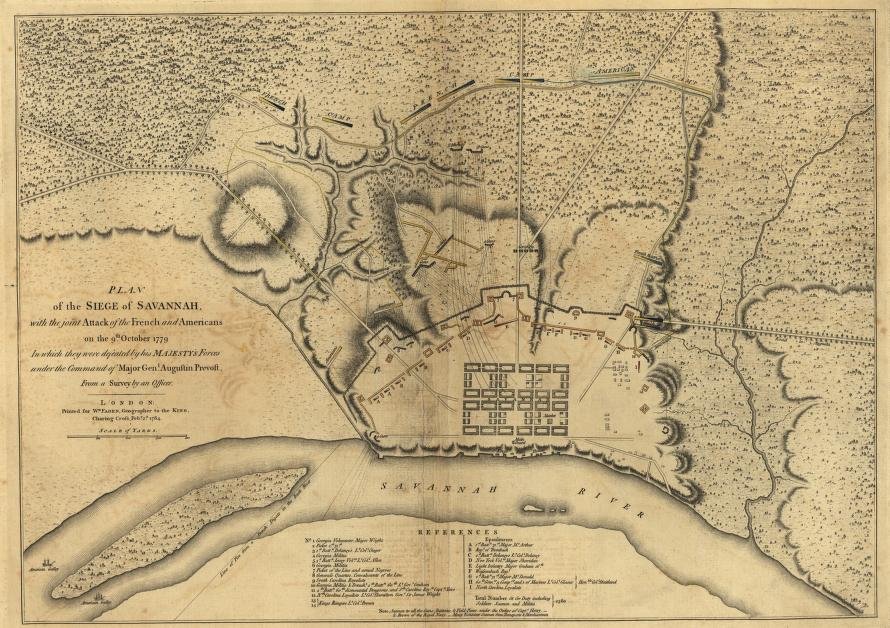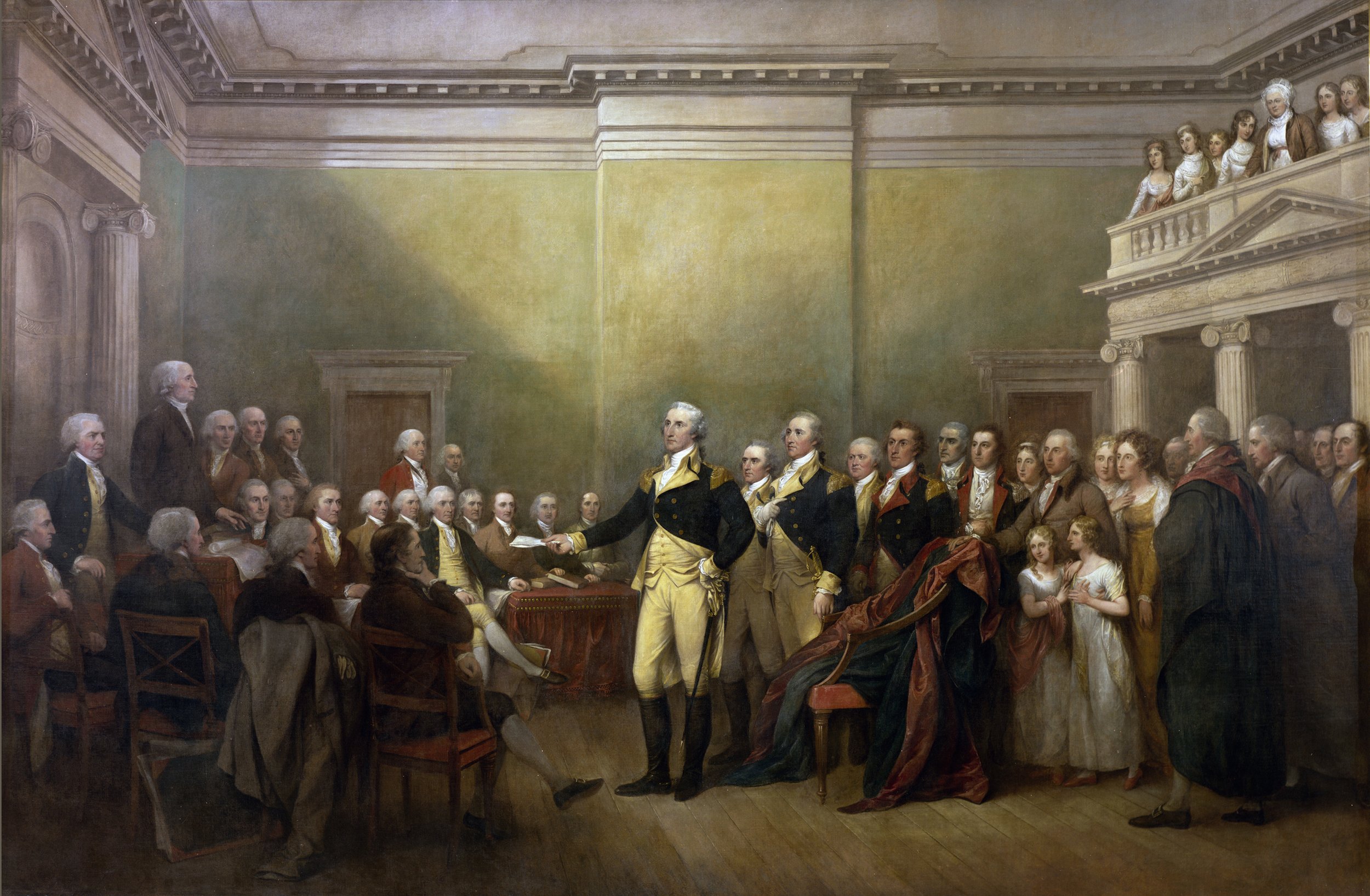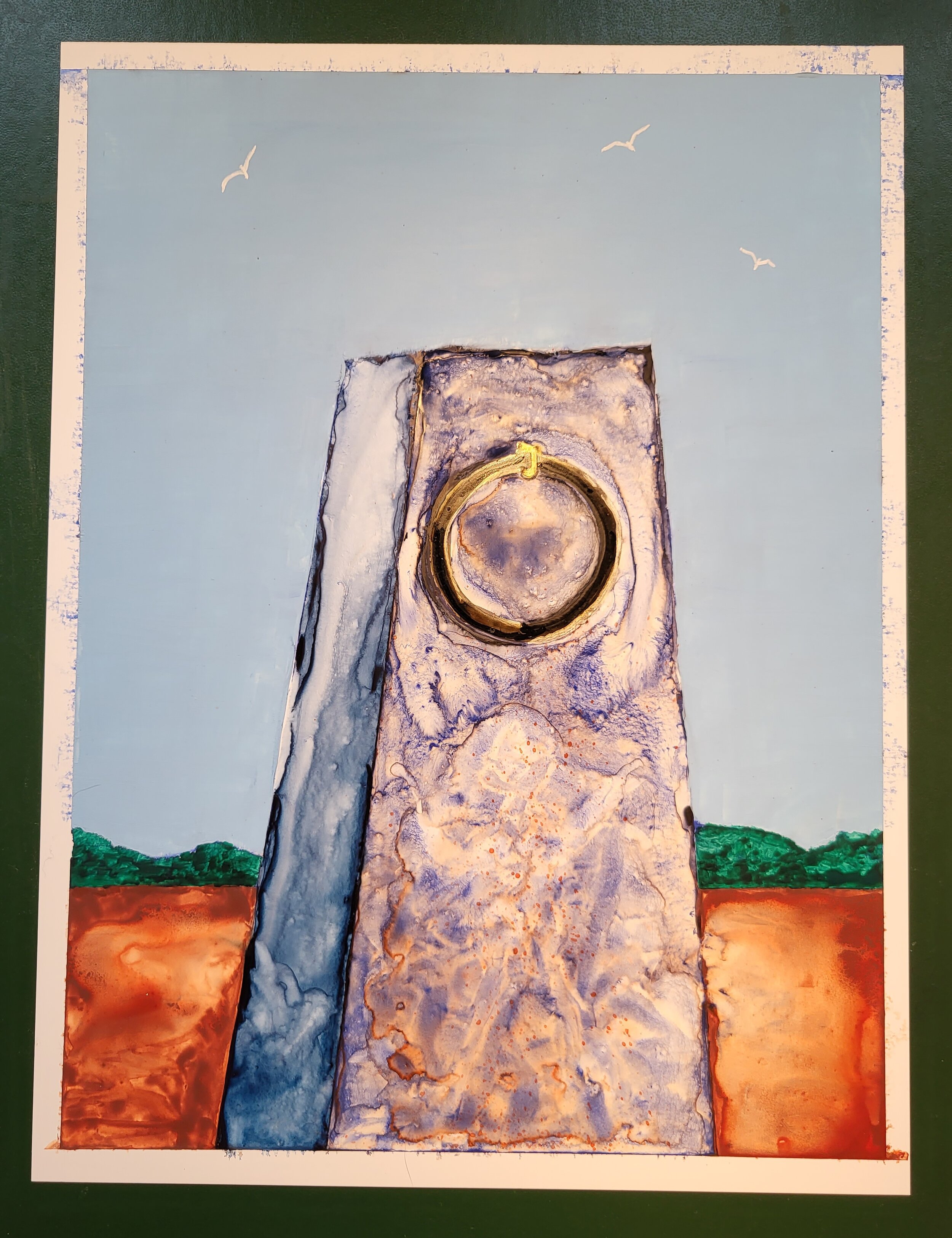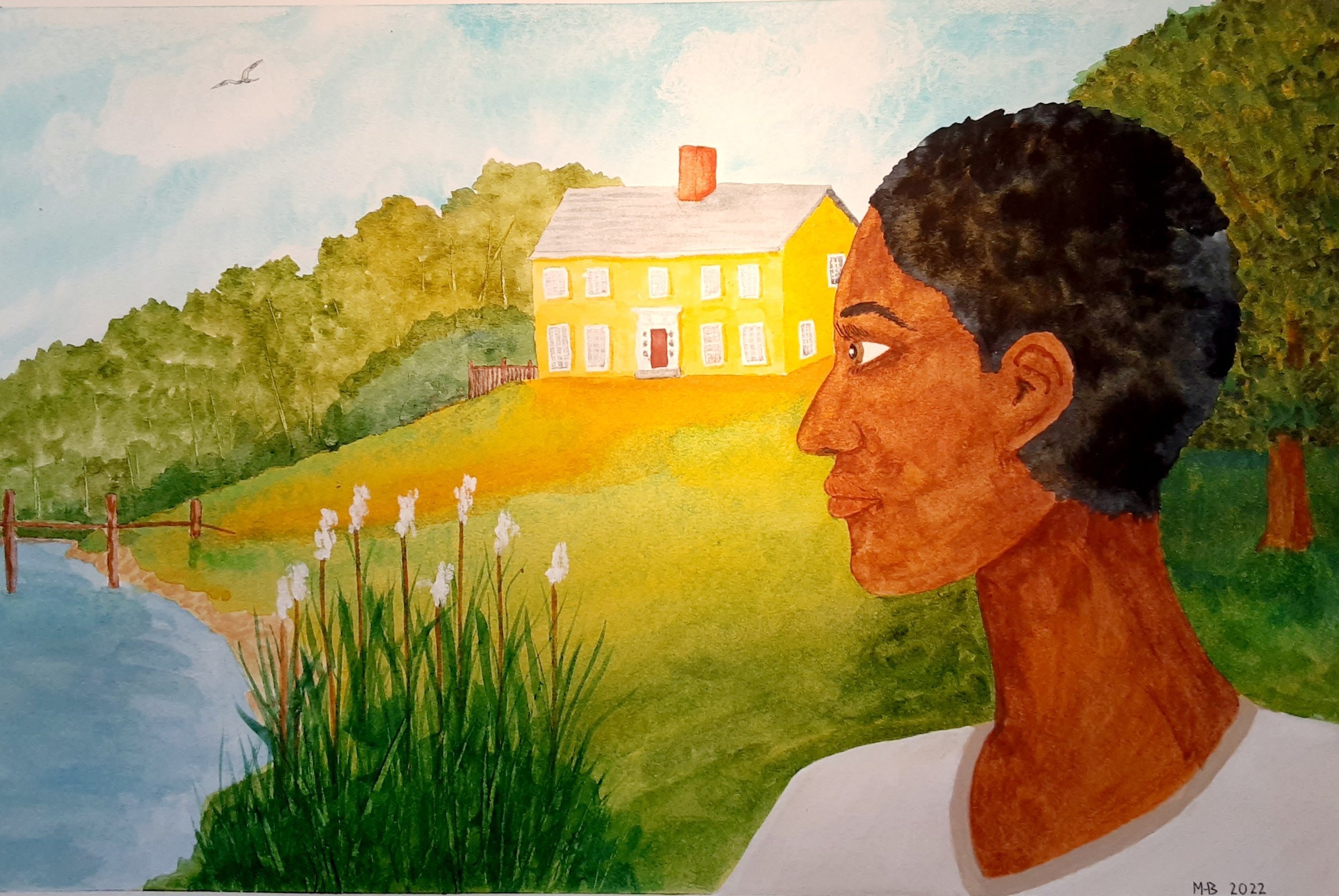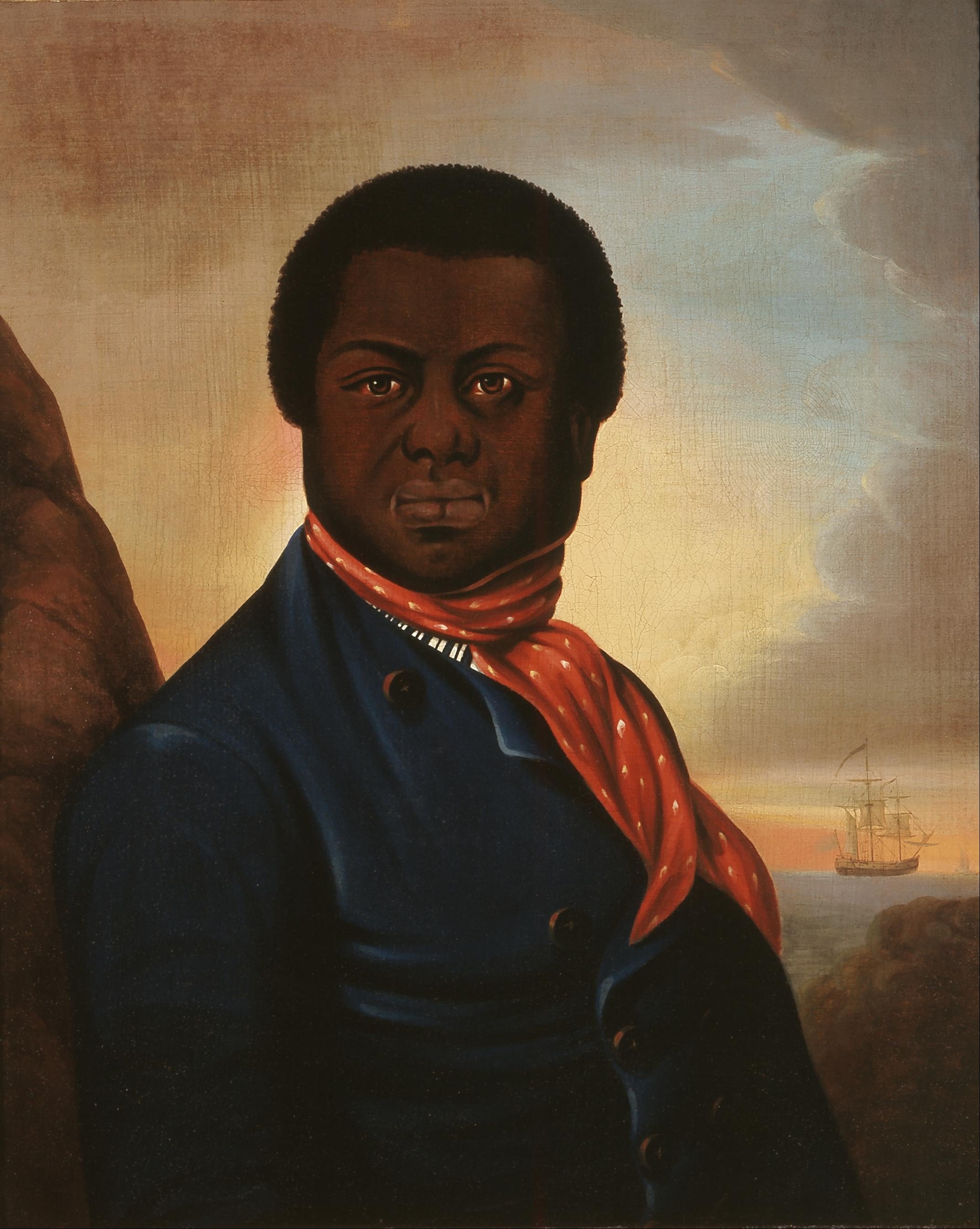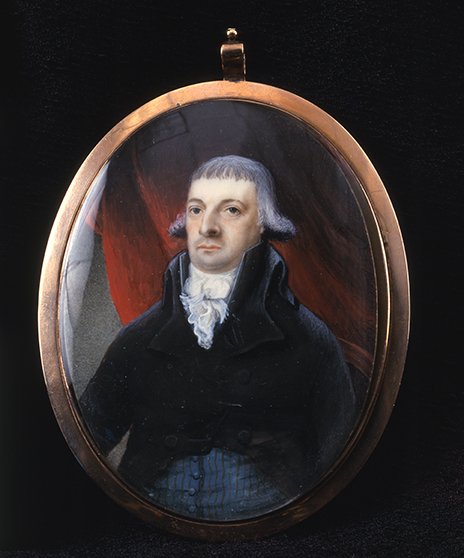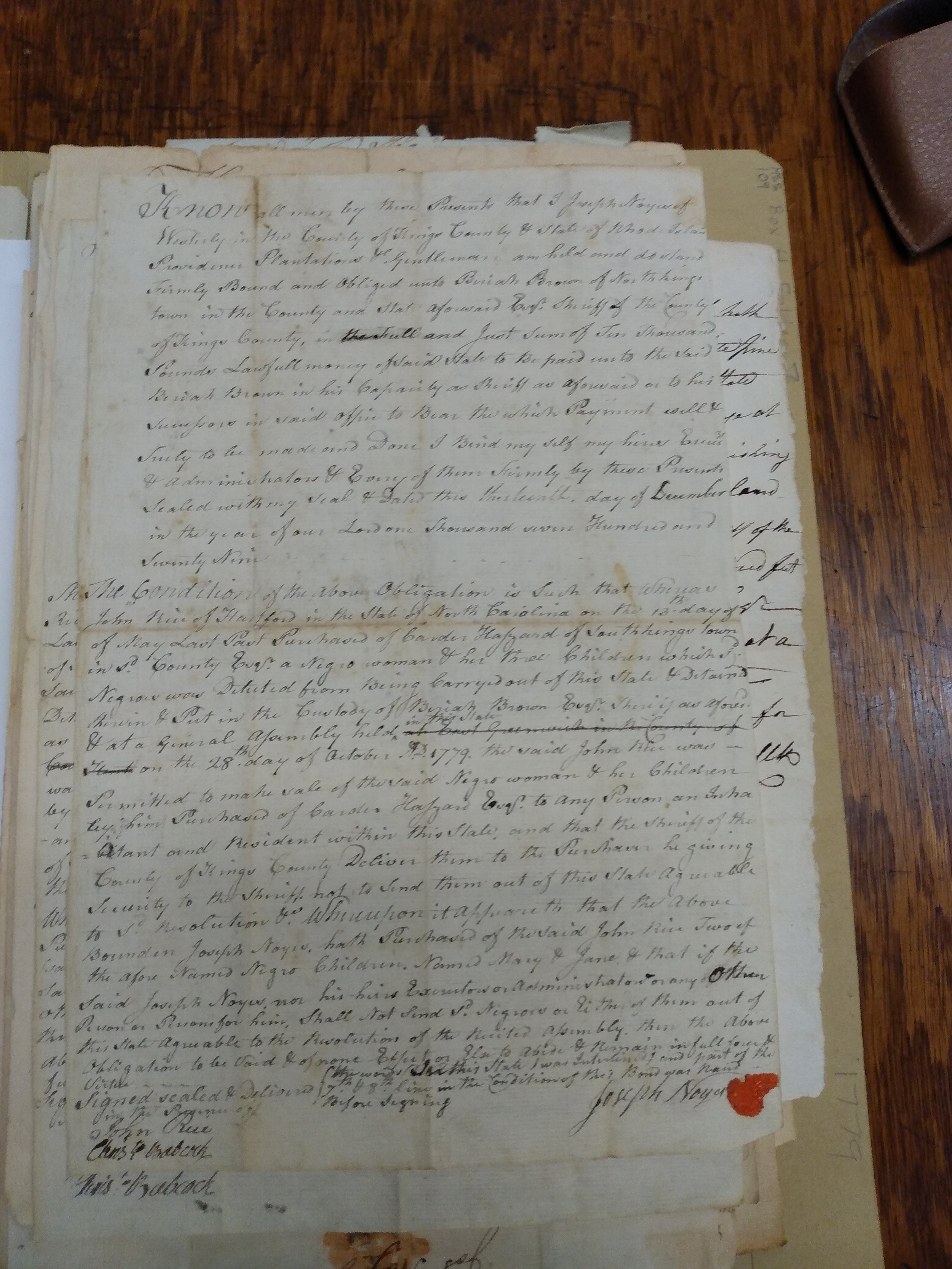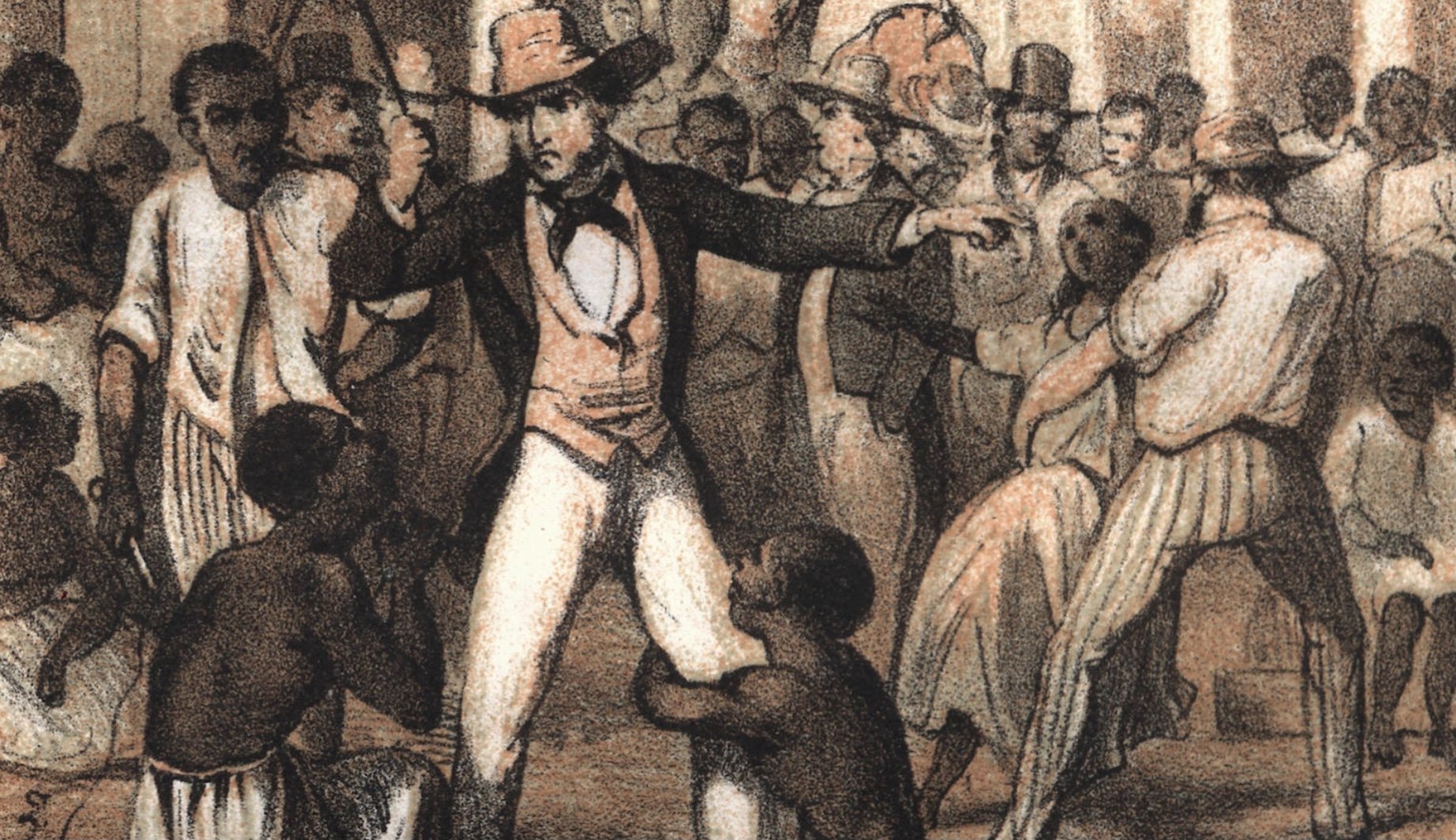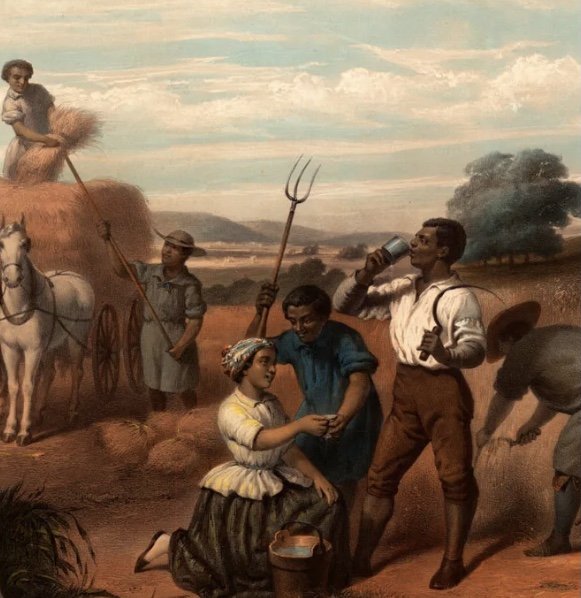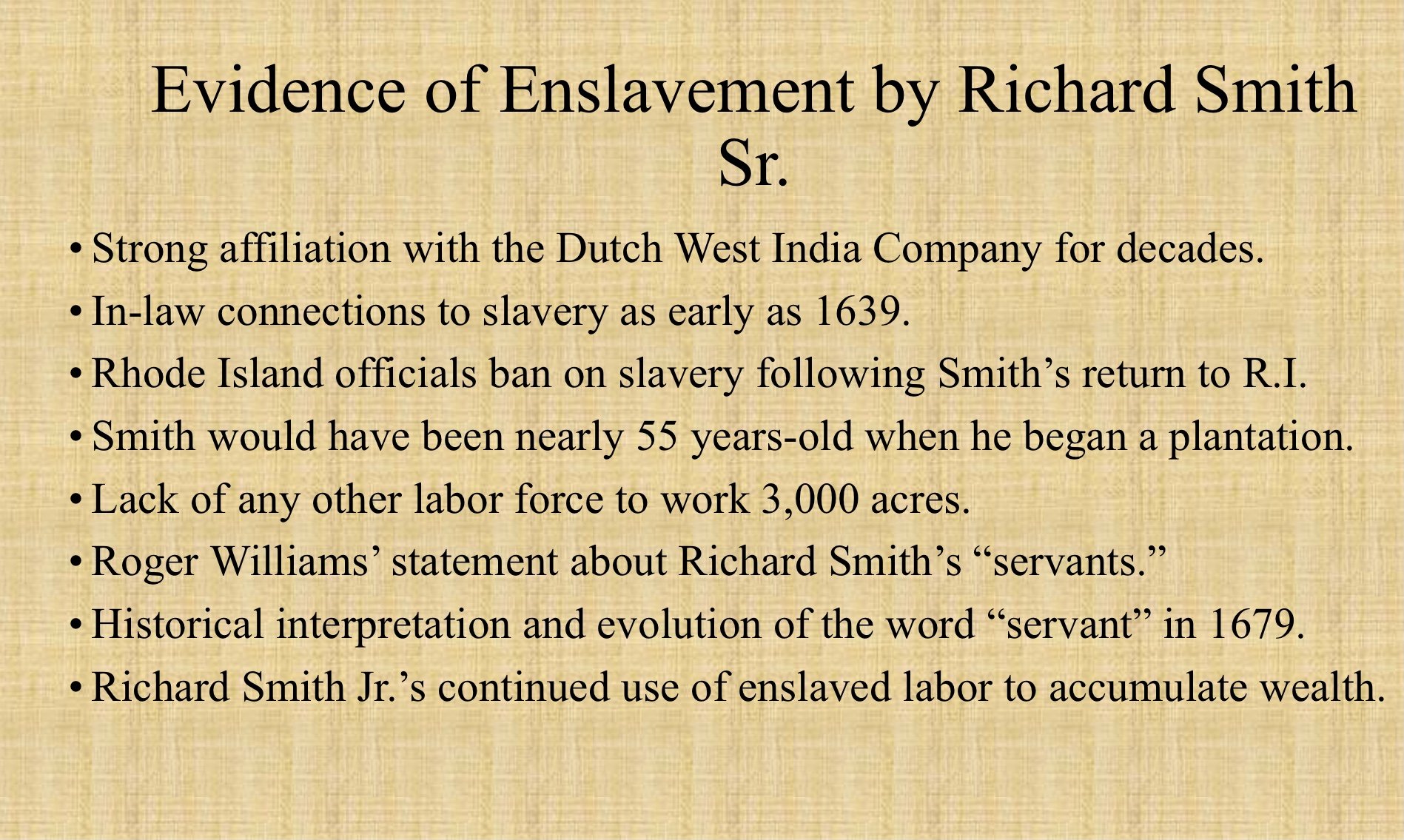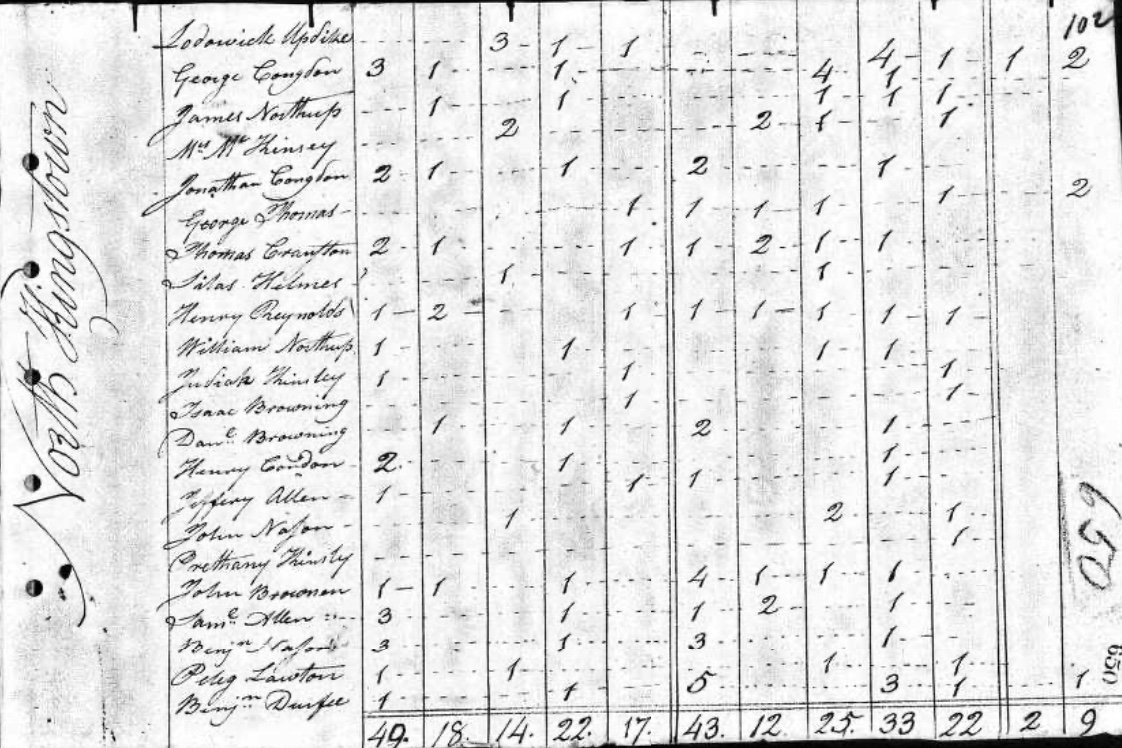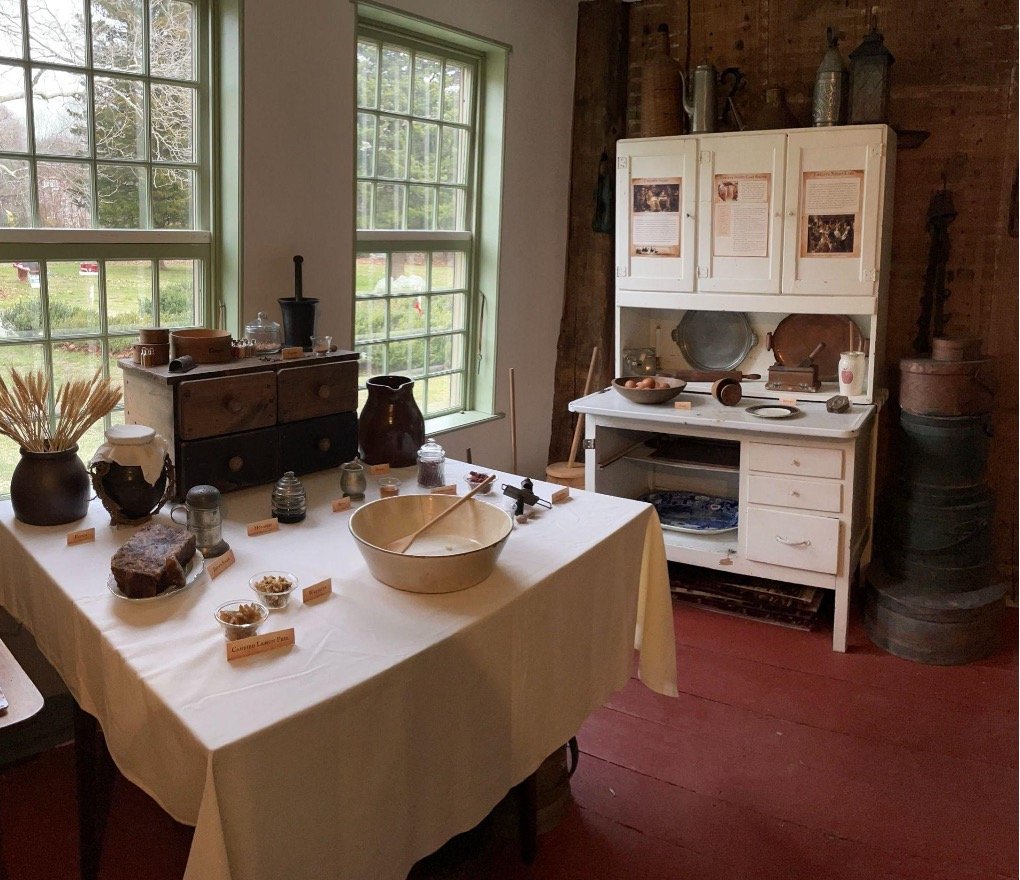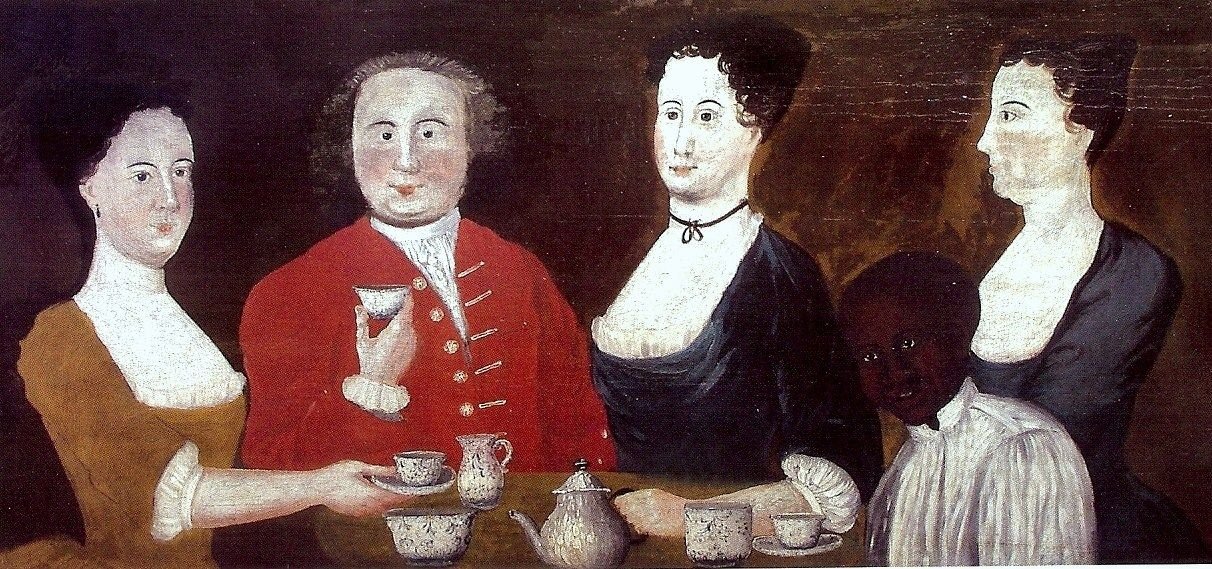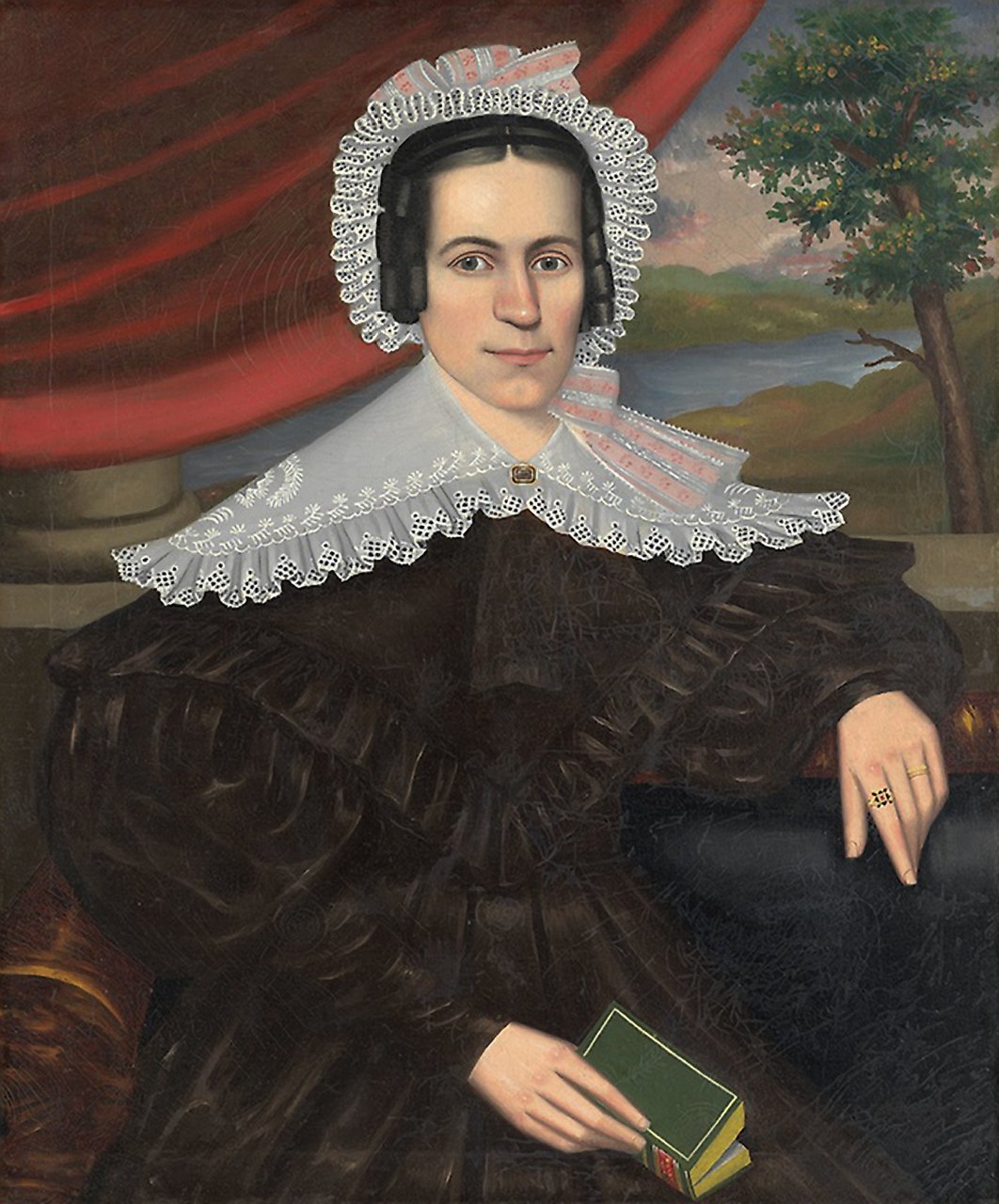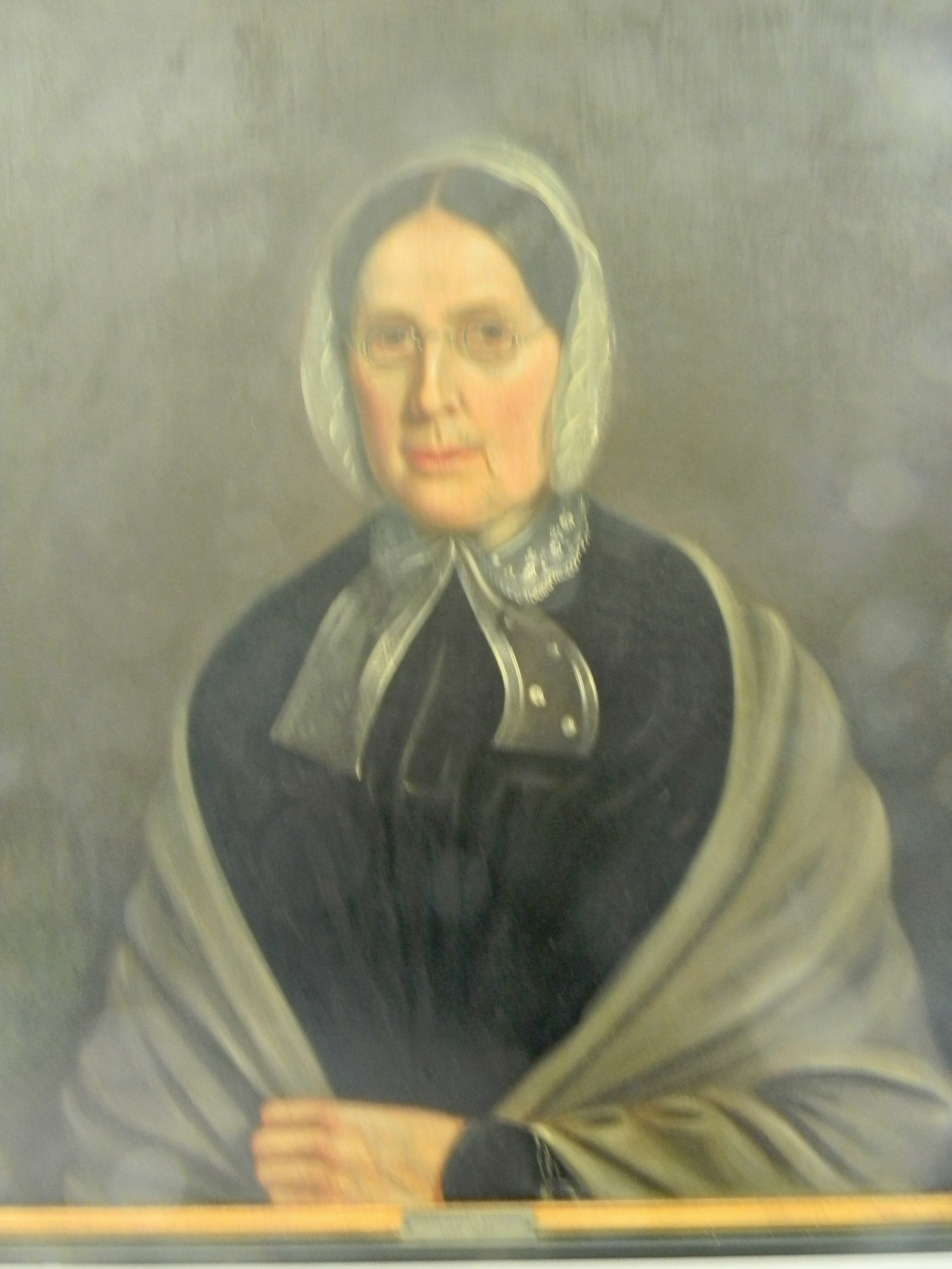19th century depiction of the burning of the H.M.S. Gaspee
In the wake of the attack on the H.M.S. Gaspee with her Captain, Lieutenant William Dudingston held prisoner in Pawtuxet, attorney James Mitchell Varnum, the young lawyer whom Nathanael Greene and brother Jacob hired to protect their interests, pounced on the opportunity to serve notice to appear in court for the taking of the cargo of the Fortune, months before with the same vessel. Varnum had waited months for the sheriff of Kent County to serve the Officer, but the warrant effectively kept Dudingston offshore, protected aboard his revenue schooner.
Varnum was able to bring the Greene’s suit before the court on July 22, 1772, wherein he successfully argued that the seizure of the Fortune and her cargo were well within Rhode Island waters. As with the case of the Hannah, the judges found that Dudingston had pursued these vessels “thirty miles from the main sea; and as all ports and havens are infra corpus comitatus, the judges ruled that “the admiral hath no jurisdiction”,[i] and that the British Lieutenant had no authority to seize these vessels or their cargo.
The case was continued under appeal, and the attorney managed to keep the proceedings in the East Greenwich courthouse where the case had been filed, as well as repeatedly summoning Dudingston, who was “three times solemnly called, but cometh not.” The British officer on release had been called back to London to give his account in a court-martial taken up in Great Britain during the appeal in the colony.
As the appeal lingered into the winter of 1773, another session saw the Lieutenant’s representative Attorney James Brenton fail to appear as, “the Weather for that and the Succeeding Days Proved So Exceeding Tempestuous and Dangerous, that your Petitioner’s Attorney could not, by any Possibility cross the Ferry’s to attend in Season his Tryal.”[ii]
The Judges then, ruled against Dudingston in absentia, deciding that he had violated the law in seizing the vessel and its cargo, and removing it to Boston, making him liable for damages.
Painting of a youthful James Mitchell Varnum Courtesy of Brown University Collections
The case propelled Varnum through the newspapers into the homes and offices of the most prominent merchants and patriots of the poorer sort, who saw in Varnum’s victory affirmation of the rights of the colonies, even as tensions with Great Britain troubled the waters.
The young attorney’s ambitions were high as his reputation began to grow. Varnum situated his office in the front corner of his newly constructed house just off the entryway. William Greene was soon a frequent visitor, dropping by for an afternoon’s discussion of philosophy and politics. Varnum envisioned entertaining leaders of the state when the General Assembly met in town.
During this time his relationship with Nathanael Greene continued to grow. The hours of strategizing and legal handling of the brothers’ case revealed that the two men shared political views that were influenced by Whig politics, bust mostly by each man’s fervent zeal for the rights of individuals and their shared passion for the pursuit of knowledge. Both were also ardent readers of the political and religious pamphlets published at the time.
Perhaps the person, besides Varnum who benefited the most from the public interest in the events around the Gaspee affair, was minister John Allen of Boston. An itinerant minister known to the Sons of Liberty, Allen was asked to give the Thanksgiving Day sermon at the Second Baptist Church, and his delivered oratory which mentioned the event and its inquiring commission no less than seven times, was published as a pamphlet which carried the title: An Oration, Upon the Beauties of Liberty, Or the Essential Rights of the Americans. The sermon was published in four different cities and printed through seven editions, becoming among the most popular pre-independence pamphlets in British colonial America.[iii]
That summer the beat for independence began to drum soundly through the colonies. Varnum had already become a community leader among the Whigs of East Greenwich and Warwick, and was among the first to organize relief for the city of Boston after the British closed its port in the brackish wake of the infamous “Tea Party”.
In July, he would learn that towns and villages throughout Massachusetts had formed militia companies. Dracut’s sole militia had reinvigorated itself after the violence in Boston, and in 1774 the seventy men in the Train Band would name his brother, James Bradley Varnum their Captain.[iv]
In August, James Mitchell Varnum, Nathanael Greene, and “a host of like-minded men” organized the Military Independent Company of East Greenwich in response to “the Late Cruel, malignant and more than savage Acts of the British Parliament…”[v]It was decided to meet at the house of William Arnold on Main Street, a tavern whose wooden sign resembled a bunch of grapes. An agreement was signed by fifty-four men of widely varying ages, which read
“Deeply impressed with the shameful Neglect of military Exercise and being willing and desirous to repair and revive that decayed and necessary Spirit of regular Discipline at this alarming Crisis. We the Subscribers do unanimously join to establish and constitute a military Independent Company…”[vi]
Varnum was placed as the Chair of a committee which intended to raise money and hire former British soldiers to train them. He donated a considerable sum, but persuaded the recruits that it was necessary to incorporate the company and make it a professional military company.
The Muster Roll of the Kentish Guard 1775 Courtesy of the RIHS Collections
Having formed a Military Independent Company with fifty-three signatories, the members moved quickly to hire the men to train them. One hired was a man named William Johnson, a former British soldier whose agreement to train the men included the provision beyond his fee that “the Company are to Board Me and find a horse to fetch and Carry me Between Here and Where I am Engaged at Present…”[vii]
With Varnum’s help, a formal petition was drawn up to present to the Governor and General Assembly.
The militia of the neighboring village of Pawtuxet would obtain their charter as the Pawtuxet Rangers on October 29, 1774. Their captain was Samuel Aborn, a sea captain who had used his sloop, Sally, to transport cannons and ammunition from the HMS Gaspee to be hidden in Pawtuxet. Aborn was also the host at the popular Golden Ball Inn at the western edge of the village on Post Road. Among other notable members of the Rangers were Captain Benjamin Arnold, Rhodes Arnold and Stephen Greene. According to the late Rhode Island historian Horace Belcher, “at least half of the membership bore the family names Aborn, Arnold, Rhodes, and Smith.”
Names of the men of the Pawtuxet Rangers Courtesy of the RIHS Collections
Historian William J. Staples wrote in his Annals of the City of Providence:
Providence at this juncture was not behind other places in making warlike preparations. It does not appear that any companies of minutemen were organized here. Their place was supplied by the Independent companies-so called- These consisted of volunteers from the militia, incorporated by the General Assembly and possessing certain privileges, among the most important of which was, that of choosing their own officers, subject only to approval by the Governor.…They were not attached to any particular regiments of the militia, nor subject to their general or regimental officers; but they received their orders immediately from the Governor, as Captain General.
In June 1774, the General Assembly had named the body the Cadet Company and assigned a colonel to take command. In the same session, the Assembly ordered the formation of a light infantry company. By October, a grenadier company had been chartered and, at the close of the year, saw the organizing of the Providence Fusiliers as well as an artillery company.
On the last day of Wednesday in October 1774, the Rhode Island General Assembly appointed James Mitchell Varnum, along with Joseph Nightingale, John Matthewson, James Angel, and Henry Marchant to a committee which would review
“…the several petitions presented to this Assembly, for establishing an independent company in the town of Newport; an independent company in the towns of East Greenwich, Warwick, and Coventry; and a grenadier company in the town of Providence; and that they make report to this Assembly, as soon as conveniently may be.”[viii]
The official petition for the Kentish Guard, read
“Inhabitants of the Town of East Greenwich, and The Subscribers [of] Warwick, and Coventry humbly present unto this Honble Assembly, that for the better Encouragement of military Knowledge and Discipline in the County of Kent, especially at a time when lawless Sway appears to bid Defiance to the essential and unalienable Rights of Nature…”
Varnum had written the “considerations” for the Guard in his own hand, and the document, almost entirely intact, was passed as an “Act Establishing Kentish Guard” on October 29, 1774. The detailed charter was a blueprint for any militia outfit. It read:
“Imprimis[ix]. It is granted unto said Company that they or the Major part of them, shall and may once every year (Viz) on the last Wednesday in April, meet and Assemble themselves together in some convenient Place by them appointed, then and there to choose their officers (Viz) Capt., two Lieutenants, and one Ensign., and all other officers necessary for the training, discipline, and well-ordering said Company. At wch meeting no Officer shall be chosen but by the greater Number of Votes then Present: the Captain, Lieutenants, and Ensign to be approved by the Governor and Council for the time being and shall be commissionated and engaged in the same manner as other Military Officers in this Colony are.
Secondly. That the said Company shall have Liberty to meet and exercise themselves upon such other Days and as often as they shall think necessary and not be subject to the Orders or Directions of the Colonel or other Field officers of the Regiment in whose District they live, in such Meetings and exercising: and they be obliged to meet for exercising at least four times each Year upon the Penalty of paying to and for the Use of the Company (viz) the Captain for each days neglect, three Pounds Lawful Money, the Lieutenants and Ensign each Twenty shillings Lawful Money, The Clerk and other subaltern Officers, each Twelve shillings Lawful Money, and each Private Soldier Six Shillings Lawful Money for one Offence, to be collected by Warrant of Distress direct to the clerk from the Captain or other Superior officer.
Thirdly. That said Company or the greater Number of them make all such Laws, Rules, and Orders among themselves as they shall deem expedient for the well ordering and disciplining said Company, and to lay any Penalty or fine for breach of such Rules not exceeding Twelve shillings Lawful Money for one Offence, to be collected as aforesaid.
Fourthly. That all those who shall be duly inlisted in the said Company, so long as they shall continue therein, shall be exempted from bearing Arms or doing other military Duty (watching and waiting only excepted) in the several Companies or Train Bands in whose District they respectively live, excepting such as shall be Officers in any of the said Companies or Train Bands.
Fifthly. That if any Officer or Officers of said Company shall be disapproved by the Governor and Council or shall remove out of said County of Kent or shall be taken away by Death, that then and in such Cases the Capt. of said Company or superior Officer for the Time being shall call a Meeting for the election of another or others in his or their stead thus removed.
Sixthly. And for the further Encouragement of said Company, it is Granted that the Capt. of said Company shall be of the rank of Colonel, that the first Lieutenant be of the rank of Lieutenant Colonel, that the second Lieutenant be of the rank of Major, and that the Ensign be the rank of Captain; and that the said officers shall be of the Court Martial and Council of War in the Regiment in whose district they live; and that all general Reviews and general musters the said Company shall rank the first independent Company for the County of Kent; and that in Time of Alarm the said Company shall be under the immediate Direction of the Commander-in-Chief of the Colony.”[x]
So democratic were these militia companies, that bruised egos were likely to result when officers were elected. The men of the Kentish Guard in this first election selected James Mitchell Varnum as Captain, or Colonel, Richard Fry of East Greenwich as 1st Lieutenant, and Christopher Greene as second lieutenant. Hopkins Cooke was elected Ensign.
Portrait of Nathanael Greene as painted by John Trumbull
Nathanael Greene, who had exerted much effort in forming and recruiting volunteers, felt slighted when he was passed over for an officer’s position due to a slight impediment apparently noted by the men when they mustered. He wrote a telling letter to Varnum, revealing that he shared the same gentleman’s code as his friend: that one needed to be always held in a place of honor and esteem; or risk the loss of reputation among your peers.[xi]
Greene wrote dejectedly from his home in Coventry that
“I was informed the Gentlemen of East Greenwich said that I was a blemish to the company. I confess it is the first stroke of mortification that I ever felt in private or publick Life a blemish to those with whom I associated…I have exerted myself to form a military company…but little did I think that the Gentlemen considered me in the light of an obtrude[e]r. My heart is too susceptible of pride, and my sentiments too delicate to wish a connection where I am considered in an inferior point of light…”
Greene was most upset that the men he had recruited thought him unfit for an Officer, “the severity of speech and the Union of sentiment, coming from Persons so unexpected, might wound the pride of my heart deeper than the force of the observation merited.” He was most wounded perhaps, that on the night of the election of officers, the men had made such pronouncements in public, something Greene considered a most humiliating moment:
“I think it would [have] manifested a more generous temper to have given me their Oppinions in private than to make proclamation of it in publick as a capital objection, for nobody loves to be the subject of ridicule however true the cause.”[xii]
He offered to resign, but begged Varnum to remain in his elected position as Colonel, and “not to forsake the company at this critical season” for the sake of their friendship. Indeed, their friendship had bonded even further that summer when Varnum attended Greene’s July 20th wedding to Catherine Littlefield at the home of William Greene.
Nathanael Greene did not abscond from the Company, but became one of their most trusted regulars, and faithful attendees of the regular musters that continued over the next four months.
For those months, William Johnson put the volunteers through the “Manual Exercises and Evolutions, Maneuvers with every other movement as taught in the English Army.”[xiii] Johnson also taught a few men to “beat the English Duty” on the drums. It was likely that during these weeks of training that Greene and other men procured weapons through Johnson. William Williams, another ex-soldier played the fife for the men’s drilling and agreed to “teach (to the best of his ability) two lads which shall be nominated by said Co. to play on the fife.”[xiv]
Greene was also a representative from Coventry to the General Assembly at this this time. In the December 1774 session in Providence, he was named to a committee that was charged with revising the militia laws of the colony. The members included Col. James Angell, Col. Joseph Nightingale, Col. John Mathewson, Major Daniel Hitchcock…” That Greene was the only non-officer appointed to the committee shows the high regard in which his participation in the Assembly was held, and his work on this committee may well be why he was chosen, above all other candidates to be the Brigadier General of the colony’s Army of Observation.
In that same December session, the legislature also chartered the North Providence Rangers, the Providence Fusiliers and the Providence Train of Artillery, as well as the Scituate Hunters.[xv] In January 1775, Stephen Jenckes of North Providence supplied several of the independent companies in Providence with muskets of his own manufacture.[xvi] On February 18, 1775, the Providence Gazette reported, “Not a day passes, Sundays excepted, but some of the companies are under arms; so well convinced are the people, that the complexion of the times renders a knowledge of the military art indispensably necessary.”
That same day, the General Assembly enacted the charter of the United Companies of the Train of Artillery. The UTA was composed of the two companies, previously formed, the Fusiliers of Providence and the Artillery Company of Providence. The UTA’s commander during the war was Colonel David Tillinghast of Newport. The UTA would join with Washington’s forces in the Siege of Boston, being one of four in the army’s combined artillery under command of Henry Knox. Their sixteen cannons would contribute to the barrage from Dorchester Heights in the final stages of the siege.
On the first Monday of April 1775, a general muster of the militia of the colony took place, on which occasion there were about two thousand men under arms in the county of Providence, besides the troop of horse.
With the word of events in Concord and Lexington on 19 April 1775 Col. James Mitchell Varnum marched the Kentish Guard from East Greenwich to Providence, and joining others, then marched on to Pawtucket where the militia were informed that the British had withdrawn to Boston.
News of the shots fired at Lexington and Concord would reach Rhode Island and the widow Zerviah Chapman at her daughter’s home in Warwick, which she helped run as an inn. On April 22, 1775, Chapman recorded, “We had ye doleful news of ye fight between ye Regulars and Americans.”[xviii] For the widow Chapman, the impending war impacted her family immediately. Having taken in her daughter, son-in-law, and grandson; she now held together a divided household with a Quaker Father and a 17-year-old grandson who enlisted in the local militia and was called away to help guard Warwick Neck.[xix]
On May 8, 1775, Nathanael Greene Jr. received word from Secretary Henry Ward that the General Assembly had named him Brigadier General. The notice read in part:
“To Nathaniel Greene Esquire Greeting Whereas for the Preservation of the Rights and Liberties of His Majesties loyal and faithful Subjects in this Colony and America, the aforesaid General Assembly have ordered Fifteen Hundred Men to be inlisted and embodied into the Army of Observation, and to be formed into One Brigade under the Command of a Brigadier General and have appointed you Nathaniel Greene Brigadier General of the said Army of Observation.”[xx]
From the day he was appointed, Greene, Varnum, and the other appointed officers worked on recruiting more men. Greene travelled to Roxbury to pick an encampment for Rhode Island troops, and wrote to the local militia leader there that
“…we have concluded to incamp upon the forfeited Lands of the Arch-Traitor Barnard. The Reasons which induce us hereto are: In the Front is a Pond. In the Rear and upon the left Flank and Hill gradually descending on every Side, capable of being defended to the greatest Advantage, and form a most excellent post for observation…”[xxi]
Staggered groups of Rhode Island recruits were already arriving outside of Boston before Varnum penned a letter to the Reverend John Murray on May 24, 1775:
“Dear Sir,
Amidst the concurrence of events which the great Creator in infinite wisdom directs, for the accomplishments of his own purposes, a British armament hath set hostile foot upon American ground. What the design of the Almighty may be, we cannot at present absolutely determine. One thing we know, our cause is just,…an army hath been raised in this colony, which is now stationed upon Jamaica Plains, in Roxbury, and that this army may do honor to themselves, with the cause in which they are embarked, it is requisite, propriety of manners, regularity of conduct, and a due reliance upon the Almighty…should be cultivated and enforced….We have, therefore selected you, as a Chaplain to our Brigade, well convinced that your extensive benevolence, and abilities, will justify our choice…”[xxii]
Greene would write to Varnum on June 2, 1775, t confirm he had heard of Murray’s acceptance. Col. Varnum’s men who would march with him were delayed by the Committee of Safety, who were struggling to place defenses along the coast even while men were marching to Boston. The Brigadier General passed along the request that
“Mr. John Jenks and John Brown desires that you with the Companies that March with you attend divine service at your arrival at Providence in their new Meetinghouse. If the time and other circumstances allow it, be kind enough to gratify them, as it will be a pleasing gratification.”
Greene also adds a cautionary note which continues to puzzle historians:
“The Kentish guards I fear will be broke up, if you carry into execution your intended punishment. I would recommend moderation. The times are so critical, and Union so necessary, that private resentment had better wait a fitter opportunity for satisfaction.”
The issue Varnum had, and who he intended to punish remain unknown. On arrival in Roxbury, he would have taken up his position as a Colonel of the three Rhode Island Regiments positioned there and relinquished his role to First Lieutenant Richard Fry. There is an indication also that he arrived at camp without rank, presaging a competition for the rank of Colonel with Captain Hitchcock of the Providence regiment whose troops were already encamped. It is clear however, that a degree of discipline was lacking in the troops. Greene wrote as well to his brother Jacob, Head of the Committee of Safety that same week
Map of Boston 1775 Courtesy of Wikipedia
“I arrived in camp on Saturday last and found it in great commotion. A few days longer in the state of excitement in which I found our troops would have proved fatal to our campaign. The want of government, and of a certainty of supplies, had thrown everything into disorder…I have made several regulations for introducing order, and composing their murmurs, but it is very difficult to limit people who had so much latitude without throwing them into disorder…I wish you would forward Colonel Varnum’s regiment; he will be a welcome guest in camp. I expect much from he and his troops example.”
With their arrival, the Kentish Guard was taken into the Continental Army and renamed the 12th Continental Regiment. The regiment contained ten musket companies of sixty men each company, with an additional ten officers overseeing them.
The first incident in which Rhode Islanders engaged in combat came upon the afternoon of June 17th when one hundred men were dispatched under command of 2nd Lieutenant Christopher Greene to be part of General Israel Putnam’s line of defense along an entrenchment at Breed’s (more commonly called Bunker Hill); said to hold a force of three hundred men.
The British Regulars landed at daybreak and tried to penetrate the entrenchment and “were severely repulsed”. When it was learned that the American’s powder had run out, the regulars regrouped, fixed their bayonets, and charged once again. Brigadier General Nathanael Greene would write to Rhode Island’s governor Nicholas Cooke:
“A smart action ensued, our People fought with amazing resolution but from the difference in number, and the want of Powder they were after a great struggle forced to give way. They took a few field pieces. The action continued all last night and today with some small intermission…They set the Town of Charles Town on fire yesterday in the afternoon, and it continued burning all last night. Today several houses have been burnt. They have got almost all their force over on that side and strongly entrenched on Bunkers Hill. Our people has entrenched on a Hill opposite them called Prospect Hill.”[xxiii]
The troops were in good spirits that night despite the exhausting hours that preceded the end of the British assault. The Americans had lost an estimated eighty soldiers with a hundred more wounded. The loss was far greater on the British, whom “…agreed on all hands”, Greene wrote to Governor Cooke: “lost killed and wounded a thousand men.”[xxiv]
As the bombs fell around them at the start of the battle, Greene had observed “Their disagreeable face” and noted that the noise “put them in a little disorder”; but insisted to Cooke that “…they express a strong desire to fight. Had we powder in plenty they should have an opportunity to distinguish themselves tonight.”
The Rhode Islanders and other militia, independent companies, and riflemen from the colonies occupied Prospect and Winter Hills that summer.
Detail from cartouche of Map of the Siege of Boston Courtesy of the Rhode Island Archives
While many officers were from elite, or at least from what we describe as middle-class white families, the soldiers themselves were an amalgamation of backgrounds and races. While the traditional histories of young New England farm boys throwing down the plow and picking up a rifle were certainly part of the enlisted population, Immigrants, Indigenous and Black Americans had served in the region’s militia throughout the tumultuous 18th century in North America; and they continued to do so as companies marched and joined the Siege of Boston. Of the 2,400 men gathered from the colonies varied companies, an estimated 120 were soldiers of color.[xxv]
In Varnum’s Continentals that summer were a handful of these patriots of color. Among them were London (or Louden) Thompson[xxvi], Jehu Pomp[xxvii], Edward Anthony[xxviii], and Jesse Willis[xxix]. Regiments from Connecticut and Massachusetts also held significant numbers of patriots of color. Included with those from Massachusetts was the Varnum’s formerly enslaved servant Silas Royall, who had enlisted in April and marched with a militia unit from Dracut, Massachusetts whose soldiers included some of Varum’s brothers, nephews and cousins.
But as provisions fell short, and clothing wore out; disorder among the “raw, irregular, and undisciplined” volunteers was beginning to simmer as the weeks progressed. Liquor was sold to the soldiers by outside “sutlers”, leaving the troops “much Debauched the Soldiers rendered undutiful.”
Disputes and bickering had also begun among the Officers from different encampments.
“I am informed that some of the Connecticut Generals are disgusted at the appointments of the General officers by Congress”, Brigadier General Greene wrote to Samuel Ward.
He had observed earlier that summer in a letter to Jacob Greene:
“There are some officers in each Regiment that exert themselves to bring the camp into regulations. There are some captains and many Subaltern officers that neglect their Duty, some through Fear of offending their Soldiers, some through Laziness and some through Obstinacy. That makes the Task of the field officers very Laborious.”
Greene sought to ensure the Rhode Island soldiers were among the best disciplined. His penned a code of conduct contained 53 Articles, including the offenses of uttering “an unlawful oath or execration”, forbid “the striking of an officer” and duels among soldiers among other regulations. The majority of Greene’s document would become the regulations printed for the Continental Army. [xxx]
Indeed, General Charles Lee wrote to Governor Cooke with high praise for the Rhode Islanders:
“I have sir, from what I have observed of the New England troops, the highest confidence in the valor of your men and common run of your officers, particularly those who are of the younger part. They have activity and fire; and in general, more knowledge than those advanced in years…”[xxxi]
It was no doubt lost to them amid the day-to-day tensions, the general disarray of a prolonged army encampment, and the eagerness to engage the enemy that often led to fights and malcontent among the troops. But Varnum, Greene, and the other officers and volunteers from Rhode Island had created independent militia companies, and writ their signatures on Charters penned in those months when the fervor for freedom burned most bright. This could easily have led, in the difficult years ahead to the loss of the war, charges of treason; and a certain sentence of death had the cause of liberty not bonded them beyond those pages in battle and in blood. A brotherhood like no other the world had seen.
[i] Bartlett, John Russell Records of the Colony and Providence Plantations in New England Volume VII, Providence, 1862 p. 101
[ii] The judges noted, as collaborated in the Diary of minister Ezra Stiles, that the day in question was a mild winter day.
[iii] Park, Steven Revising the Gaspee Legacy Journal of the American Revolution
https://allthingsliberty.com/2015/07/revising-the-gaspee-legacy/
[iv] The Train Band would change in December 1774 when an Act by the Council called for the enlistment of 12,000 “minute men” to march on the order. Varnum was retained to assist with the training of the troops as well as the militia whop would defend the town in their absence. He marched with the troops to Lexington and then the siege of Boston. On January 1, 1776, he was appointed Captain of the Dracut minutemen, a position he would hold until 4 April 1787. (Varnum, John Marshall The Varnums of Dracut, p.190
[v] D’Amato, Donald A. General James Mitchell Varnum (1748-1789) The Man and His Mansion The Varnum House Museum, 1996 p. 6
[vi] Showman, ed. The Papers of General Nathanael Greene Vol. I December 1766-December 1776 University of North Carolina Press 1976 Vol. 1, pp. 68-69
[vii] Ibid. p. 70
[viii] Bartlett, Records of the State of Rhode Island and Providence Plantations, Providence, 1863 Vol. 7, p. 257
[ix] “In the first place…”
[x] PNG Vol. 1, pp. 73-74
[xi] The bruised egos of his Officers was one problem that was most challenging for Washington, especially in the first few years of the war, when a good number of commissioned officers resigned. Such gentlemen were most often from wealthy, patrician families who felt entitled to be Officers while knowing little of the duties involved, or of the bruising debates they would encounter with other Officers who thought less of them or their opinions than what was socially acceptable. Varnum, coming from a modest background, and Greene, who was wealthy but raised to be a humble Quaker, would both come to feel underappreciated and looked down upon by those Officers commissioned from the elites. This resulted in the shared determination to prove themselves by their accomplishments, but also a sensitivity which often caused them to flinch from even the smallest of criticisms, and which made them both at times prickly and pugnacious in their correspondence.
[xii] PNG Vol. 1, pp. 75-76
[xiii] Thayer, Theodore Nathanael Greene, Strategist of the American Revolution New York, Twayne Publishers 1960 p. 44
[xiv] PNG, Vol. 1, p. 71
[xv] Bartlett, Vol. 7, pp. 260-264
[xvi]. Rhode Island Historical Society Collections, vol. 5, F76, R47, Providence, Knowles and Vose, 1843, 248–49.
[xvii]. Chapman diary.
[xviii]. Chapman diary.
[xix] See the author’s New England’s Citizen Soldiers: Mariners and Minutemen (Charleston, The History Press 2019)
[xx] PNG Vol. 1., pp 78-79
[xxi] Ibid. p. 80
[xxii] Ibid. p. 81
[xxiii] PNG, pp. 87-88
[xxiv] Ibid. p. 89
[xxv] Greenwalt, Phillip George Washington’s Integrated Army: The American Armies of the Revolution American Battlefield Trust, January 4, 2021, updated October 26, 2023, see http://battlefields.org/learn/articles
[xxvi] Popek, Daniel M. They ‘fought bravely but were unfortunate”; The True Story of Rhode Island’s ‘Black Regiment’ and the Failure of Segregation in Rhode Island’s Continental Line 1777-1783 p. 711 “1775, London Thompson, Capt. Ethan Clarke’s Co., Col. Varnum’s Continentals.”
[xxvii] Ibid., pp. 697-698 Served in Col. Varnum’s Continental Regiment through 1776
[xxviii] Ibid., p. 659 “1775 Pvt. Lt. Nathaniel Hawkins’ Co. Varnum’s Continental Regt.” Also listed on the Return of the Sick and Wounded, convalescing at “Washington House” from November 25, 1775 – December 2, 1776
[xxix] Ibid., p. 719 “1775 Pvt., Capt. Ethan Clarke’s Co., Col. Varnum’s Continental Regt.
[xxx] Walker, Anthony So Few the Brave Newport, Seafield Press 1981 pp. 7-8
[xxxi] Bartlett, Vol. VIII, p. 111




